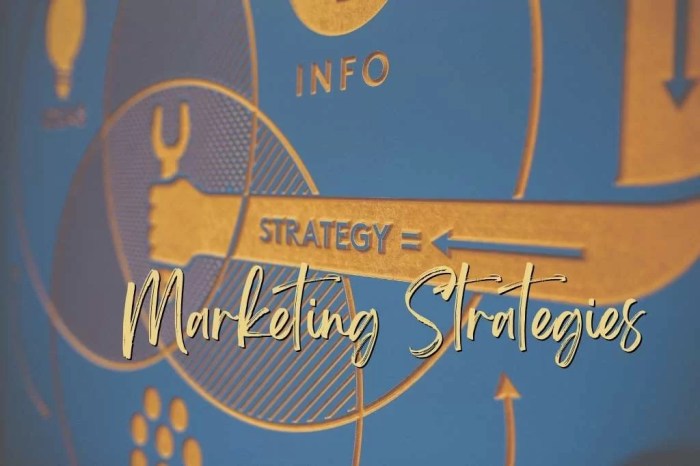How to avoid making stupid mistakes is a crucial skill for success in all aspects of life. This guide dives deep into the root causes of errors, offering proactive strategies to prevent them. From personal relationships to professional endeavors, understanding why we make mistakes and how to avoid repeating them is key to achieving our goals and feeling more confident.
We’ll explore the psychological factors that contribute to mistakes, analyze different decision-making processes, and learn from past errors. The guide also covers developing a growth mindset, which is essential for embracing challenges and viewing setbacks as opportunities for learning and improvement.
Understanding the Root Causes of Mistakes
Mistakes are an inevitable part of life, occurring in personal, professional, and social spheres. Recognizing the underlying reasons behind these errors is crucial for learning from them and preventing future occurrences. This understanding allows for targeted strategies to improve decision-making and problem-solving skills. By examining the psychological and cognitive factors involved, we can develop a more comprehensive approach to error avoidance.Understanding the root causes of mistakes goes beyond simply identifying the error.
It delves into the underlying factors that contributed to the mistake, such as flawed thinking processes, inadequate preparation, or a lack of awareness. This deeper understanding is essential for proactive measures to prevent similar errors in the future.
Common Types of Mistakes
Various types of mistakes plague individuals across different contexts. In personal life, these can range from poor financial decisions to interpersonal conflicts. Professionally, mistakes can manifest as project failures, communication breakdowns, or missed deadlines. Socially, mistakes can stem from misinterpretations of social cues or inappropriate behaviors. Recognizing the patterns and characteristics of these errors is a key step in understanding their root causes.
Psychological and Cognitive Factors
Cognitive biases and mental shortcuts can lead to significant errors. For instance, confirmation bias, where individuals favor information that confirms existing beliefs, can result in flawed decisions. Similarly, availability heuristic, where judgments are based on readily available information, can cause inaccurate assessments. These cognitive shortcuts, while often helpful, can sometimes lead to serious errors if not recognized and corrected.
Role of Inexperience, Poor Planning, and Lack of Attention
Inexperience often leads to mistakes due to a lack of knowledge or practical skills. Poor planning, characterized by inadequate preparation or a lack of foresight, frequently contributes to errors in execution. Lack of attention, whether due to distraction or inattentiveness, can result in errors of omission or commission. These factors often intertwine, creating a cascade effect that amplifies the likelihood of making mistakes.
Age-Related Differences in Mistake Causation
| Age Group | Common Causes | Contributing Factors ||—|—|—|| Children (ages 5-12) | Impulsivity, lack of attention, limited knowledge, inexperience | Developing cognitive abilities, limited life experience, peer influence || Adolescents (ages 13-19) | Risk-taking behavior, peer pressure, emotional instability, impulsivity | Hormonal changes, developing sense of identity, social pressures || Young Adults (ages 20-35) | Poor planning, stress, lack of experience, overconfidence | Transitioning into adulthood, career development, relationship formation || Middle Adults (ages 36-55) | Burnout, complacency, lack of adaptability, entrenched habits | Long-term stress, job pressures, family responsibilities || Seniors (ages 56+) | Slower processing speed, health issues, lack of technology skills | Age-related cognitive decline, physical limitations, changes in lifestyle |This table illustrates how the root causes of mistakes vary across different life stages.
Understanding these patterns allows for more tailored strategies for preventing and correcting errors in each age group. For example, strategies for children might focus on developing attention and impulse control, while those for seniors might involve accommodations for age-related cognitive decline.
Proactive Strategies for Prevention
Avoiding mistakes isn’t just about reacting to problems; it’s about proactively anticipating and mitigating them. A proactive approach involves careful planning, thorough preparation, and a systematic process for identifying potential pitfalls. This proactive mindset shifts the focus from fixing errors to preventing them in the first place, ultimately leading to more efficient and successful outcomes.Proactive mistake prevention is not just about avoiding the obvious; it’s about digging deeper to uncover the hidden factors that contribute to errors.
Avoiding silly blunders often comes down to careful consideration. Thinking things through before acting, and understanding the potential consequences, are key. However, sometimes a stark reminder of the impact of our actions is needed. For example, seeing these 20 images of child labor will make you speechless, these 20 images child labor will make you speechless , highlighting how our choices affect others.
This stark reality can help us avoid making poor decisions in the future by emphasizing the importance of empathy and mindful actions.
By anticipating potential problems, we can implement solutions to minimize risks and enhance our chances of success. This approach not only reduces the likelihood of errors but also fosters a more resilient and adaptable mindset.
Identifying Potential Pitfalls
A crucial first step in proactive mistake prevention is identifying potential pitfalls. This involves a systematic process of examining the situation from multiple angles, considering various factors, and anticipating potential challenges. This proactive approach necessitates a thorough understanding of the task, its context, and the potential consequences of various actions.
- Break Down the Task: Divide complex tasks into smaller, more manageable steps. This allows for a more detailed examination of each step and potential points of failure. For instance, a large project might be broken down into smaller modules, each with its own checklist of potential problems.
- Consider Past Experiences: Analyze past successes and failures, identifying recurring patterns or common errors. If a project has failed in the past, analyze the factors that contributed to the problem. Did insufficient resources lead to delays? Was communication ineffective? Identifying these patterns can help anticipate similar issues in future endeavors.
- Seek Input from Others: Engage with colleagues, experts, or stakeholders to gain diverse perspectives. Different viewpoints can illuminate potential pitfalls that might have been overlooked. Constructive criticism can uncover hidden issues or unforeseen obstacles.
Anticipating and Mitigating Problems
Anticipating foreseeable problems requires a combination of careful analysis and creative thinking. This involves considering potential scenarios and developing contingency plans to address them. The key is to be prepared for various outcomes and to have a backup strategy for when things don’t go as planned.
- Scenario Planning: Develop different scenarios that Artikel potential outcomes, including positive, negative, and neutral. For example, consider the various ways a project timeline might be affected by unexpected delays or resource constraints.
- Develop Contingency Plans: For each potential problem, create a contingency plan to address the issue. This might involve alternative solutions, backup resources, or revised timelines. Contingency plans should be specific and detailed, including the steps needed to implement the plan.
- Risk Assessment: Evaluate the likelihood and potential impact of each identified problem. Prioritize issues based on their severity and probability of occurrence. This systematic approach helps allocate resources and efforts effectively to address the most critical risks first.
Thorough Preparation and Research
Thorough preparation and research are fundamental to proactive mistake prevention. A well-researched approach minimizes the likelihood of errors by ensuring a solid understanding of the task and its associated complexities. This meticulous preparation builds a strong foundation for success.
- Comprehensive Research: Gather all relevant information, data, and resources. Understand the specifics of the situation, including any industry standards, regulations, or best practices. A thorough review of similar projects or past experiences can be extremely helpful.
- Detailed Planning: Create a detailed plan that Artikels the steps required to achieve the desired outcome. The plan should be specific, including timelines, resources, and responsibilities. This clear roadmap helps to avoid ambiguity and miscommunication.
- Anticipate and Plan for Resources: Ensure that the necessary resources (time, budget, personnel, materials) are available and planned for. Thorough preparation ensures that you don’t run into resource constraints during the process.
Utilizing Checklists and Reminders
Checklists and reminders provide a structured approach to proactively identify potential errors and reduce their likelihood. They act as a systematic guide to ensure that critical steps are not overlooked. Using checklists ensures a more consistent and reliable process.
- Create Checklists: Develop specific checklists for each step of a process or task. These checklists should include all the essential steps and potential points of failure.
- Utilize Reminder Systems: Employ various reminder systems, such as calendar entries, alarms, or project management tools, to keep track of deadlines and critical tasks. These systems provide a structured approach to stay on top of the schedule.
- Regular Review and Revision: Regularly review and revise checklists and reminders to ensure their accuracy and relevance to the current situation. This allows for adjustments to be made as needed, enhancing the effectiveness of these tools over time.
Proactive Strategies Effectiveness Table
| Strategy | Scenario 1: Project Management | Scenario 2: Financial Planning | Scenario 3: Technical Troubleshooting |
|---|---|---|---|
| Identifying Potential Pitfalls | Identifying potential delays due to resource constraints | Identifying potential financial risks associated with investments | Identifying potential software compatibility issues |
| Anticipating and Mitigating Problems | Developing contingency plans for resource shortages | Diversifying investment portfolio to mitigate risk | Testing software compatibility with multiple hardware setups |
| Thorough Preparation and Research | Thorough project documentation and timeline estimation | Analyzing market trends and economic forecasts | Researching possible causes of error messages |
| Utilizing Checklists and Reminders | Using project management tools to track deadlines and tasks | Creating financial budgets and adhering to them | Using troubleshooting guides and checklists |
Developing Critical Thinking Skills
Critical thinking is the cornerstone of avoiding costly mistakes. It’s not just about acquiring knowledge, but about evaluating that knowledge, identifying biases, and forming reasoned judgments. This process allows us to approach situations with a more objective and comprehensive understanding, minimizing the likelihood of errors. Developing critical thinking skills involves a conscious effort to analyze information thoroughly, challenge assumptions, and consider diverse perspectives.Effective critical thinking requires a systematic approach to problem-solving.
It enables us to separate fact from opinion, identify logical fallacies, and construct well-supported arguments. By mastering these techniques, we can improve our decision-making and avoid the pitfalls of impulsive or poorly reasoned actions.
Evaluating Information Objectively and Critically
Critical evaluation of information is essential for making sound judgments. This involves questioning the source of information, examining its potential biases, and considering the evidence supporting the claims. Sources should be credible and reliable, avoiding anecdotal evidence or unsubstantiated claims. Analyzing the methodology behind the information, looking for confirmation from multiple sources, and assessing the potential for conflict of interest are vital steps.
Questioning Assumptions and Challenging Biases
Assumptions are often the root of errors in judgment. Critical thinking requires a willingness to question our own assumptions and those of others. Identifying and challenging biases is crucial. Biases can stem from personal experiences, cultural background, or societal influences. Recognizing these influences helps us to understand our own limitations and evaluate information more objectively.
A critical thinker actively seeks out counterarguments and diverse perspectives to avoid confirmation bias.
Analyzing Situations from Multiple Perspectives
A key aspect of critical thinking is the ability to consider situations from multiple viewpoints. By adopting the perspectives of others, we can identify potential problems or solutions that might be overlooked from a single viewpoint. This includes acknowledging and addressing the concerns and interests of all stakeholders involved. Empathy plays a crucial role in this process, allowing for a more nuanced and comprehensive understanding.
A diverse range of perspectives should be sought out to gain a more complete picture.
Identifying Logical Fallacies
Logical fallacies are flaws in reasoning that can lead to incorrect conclusions. Recognizing these errors is essential for avoiding mistakes. Examples include:
- Ad hominem: Attacking the person making the argument instead of addressing the argument itself. For example, dismissing a scientist’s research because of their political affiliations.
- Appeal to authority: Using the opinion of an authority figure as evidence, even if the authority figure is not an expert in the relevant field. For instance, relying on a celebrity’s opinion on scientific topics.
- Straw man: Misrepresenting someone’s argument to make it easier to attack. For example, distorting a complex policy proposal to present it as something overly simplistic.
- False dilemma: Presenting only two options when more exist. For instance, arguing that either we support a particular policy or we are against progress.
Identifying and avoiding these fallacies improves the quality of our thinking and reduces the chance of drawing erroneous conclusions.
Constructing Sound Arguments
Constructing sound arguments involves presenting well-supported claims with logical reasoning and evidence. A strong argument clearly defines the claim, provides relevant evidence, and explains the connection between the evidence and the claim. Logical reasoning and credible sources are key elements.
A sound argument is built on a foundation of facts and logic, not on emotions or personal biases.
Following these principles helps us to construct persuasive and well-reasoned arguments, leading to more effective communication and decision-making.
Improving Decision-Making Processes
Effective decision-making is a crucial skill for navigating life’s complexities and achieving desired outcomes. It involves a structured approach, moving beyond impulsive choices and embracing a more thoughtful, considered process. A well-defined decision-making process can lead to better outcomes, reduced errors, and greater confidence in choices. This process encompasses understanding the problem, gathering information, evaluating options, and anticipating potential consequences.A strong decision-making process is not just about choosing the “right” answer; it’s about approaching a problem systematically, minimizing biases, and making informed choices.
This process involves acknowledging potential pitfalls and developing strategies to mitigate them. It empowers individuals to take ownership of their choices and to learn from both successes and failures.
Stages Involved in Informed Decision-Making
A well-structured decision-making process typically involves several distinct stages. These stages allow for a more thorough and comprehensive evaluation of options, leading to more effective choices. Understanding these stages empowers individuals to avoid hasty decisions and to make choices that align with their goals and values.
- Problem Definition: Clearly defining the problem is the foundation of any effective decision. Vague or ill-defined problems can lead to misguided solutions. This stage involves identifying the core issue, its impact, and the desired outcome. A well-defined problem statement clarifies the specific need that the decision aims to address.
- Information Gathering: Thorough research and data collection are essential for making informed decisions. Gathering relevant information involves exploring various sources, such as data analysis, expert opinions, and market research. This stage ensures a comprehensive understanding of the situation and allows for a more nuanced perspective on the problem.
- Option Evaluation: Once relevant information is gathered, evaluating potential options becomes critical. This involves comparing and contrasting different choices, considering their feasibility, potential benefits, and potential drawbacks. A systematic evaluation process helps in eliminating less viable options and identifying promising alternatives.
- Risk Assessment: Anticipating potential consequences and risks is vital for making prudent decisions. This involves considering both positive and negative outcomes, their likelihood, and their impact. A thorough risk assessment helps in preparing for potential challenges and developing contingency plans.
- Decision Selection: Choosing the best option involves weighing the potential benefits and risks of each alternative. This stage often involves considering personal values, long-term goals, and ethical considerations. The selected option should align with the defined goals and desired outcomes.
- Implementation and Monitoring: Putting the chosen solution into action and monitoring its effectiveness are critical. This stage involves tracking progress, adjusting the plan as needed, and learning from the experience. Monitoring ensures that the decision is achieving its intended results and allows for necessary adjustments.
Techniques for Gathering Relevant Information
Gathering relevant information is a crucial step in the decision-making process. Various techniques can be employed to ensure that the data gathered is accurate, reliable, and comprehensive. This involves utilizing a diverse range of sources and applying critical thinking to assess the validity of the information.
- Data Analysis: Analyzing data from various sources can provide insights into trends, patterns, and potential outcomes. Data analysis helps in identifying key factors that influence the decision and can help to support or refute various hypotheses.
- Expert Opinions: Consulting with experts in the relevant field can provide valuable insights and perspectives. Expert opinions offer a more nuanced understanding of the situation and can help in identifying potential blind spots.
- Market Research: Conducting market research can provide valuable insights into customer preferences, market trends, and competitor activities. This information can help in making informed decisions about product development, marketing strategies, and pricing.
Evaluating Options
Evaluating options involves a systematic approach to comparing and contrasting different alternatives. This process considers factors such as feasibility, potential benefits, potential drawbacks, and alignment with overall goals. A well-structured evaluation process helps in identifying the most promising options.
Avoiding silly errors often boils down to a strong mindset. It’s easy to get discouraged and think about throwing in the towel when things get tough. However, learning how to push through those moments when you’re on the verge of quitting, like the 6 ways outlined in this helpful article 6 ways keep yourself going when you’re almost ready quit , is crucial.
Ultimately, maintaining focus and persistence are key to steering clear of those costly mistakes.
- Pros and Cons List: Creating a list of the advantages and disadvantages of each option can provide a clear overview of the potential outcomes. This structured approach helps in identifying the most viable alternatives.
- Cost-Benefit Analysis: Assessing the costs and benefits of each option is crucial for making informed decisions. This analysis helps in identifying the most cost-effective and beneficial option.
Considering Potential Consequences and Risks
Anticipating potential consequences and risks is an integral part of the decision-making process. This involves evaluating both the positive and negative outcomes of each option and considering the likelihood of each outcome. Understanding the potential risks associated with a decision can help in developing contingency plans and mitigating potential negative impacts.
A thorough risk assessment helps in developing contingency plans and preparing for potential challenges.
Decision-Making Frameworks
Various frameworks can guide the decision-making process, providing structure and support. These frameworks offer a structured approach to evaluating options, considering potential risks, and selecting the best course of action.
- SWOT Analysis: Identifying Strengths, Weaknesses, Opportunities, and Threats is a crucial framework for evaluating internal and external factors that can impact a decision. This framework can provide a comprehensive view of the situation, allowing for a more informed decision.
- Decision Matrix: A decision matrix helps in comparing and contrasting different options based on various criteria. This framework allows for a structured approach to evaluating the pros and cons of each option.
Decision-Making Flowchart
[A flowchart illustrating the decision-making process would be displayed here, but it is not possible to create a flowchart in this text-based format.]
Effective Learning from Mistakes
Mistakes are inevitable parts of the learning process. Instead of viewing them as failures, we can transform them into opportunities for growth and improvement. Embracing a proactive approach to analyzing errors allows us to understand the underlying causes, identify recurring patterns, and develop strategies to prevent future missteps. This proactive approach is crucial for personal and professional development.Effective learning from mistakes is not just about identifying what went wrong; it’s about understandingwhy* it went wrong and implementing changes to avoid repeating the same errors.
This involves a multifaceted approach, including self-reflection, analysis of past experiences, and learning from the mistakes of others.
Analyzing Past Errors Constructively
A critical aspect of learning from mistakes is the ability to dissect them methodically. This involves more than just acknowledging the outcome; it requires a deep dive into the process leading up to the error. Ask yourself: What were the contributing factors? What assumptions did I make? What information was missing or misinterpreted?
Detailed analysis provides insights into the root causes, enabling more effective preventative measures.
Identifying Patterns in Mistakes
Recurring mistakes often signal underlying weaknesses or blind spots. By carefully examining past errors, you can identify patterns and themes. For example, if you consistently miss deadlines, the pattern might indicate a problem with time management or prioritization. Understanding these patterns allows you to develop targeted strategies for improvement.
Learning from the Experiences of Others
Learning from the mistakes of others is a powerful shortcut to avoiding similar pitfalls. Seek out examples of past failures in similar situations. Read case studies, listen to expert advice, and engage in discussions with colleagues. The experiences of others can offer valuable insights and potential solutions that you might not have considered.
Techniques for Avoiding Repeating Mistakes
Once you’ve identified the root causes and patterns of your errors, you can implement strategies to prevent their recurrence. This involves a combination of proactive measures, such as improved planning, better preparation, and more thorough checks. For instance, if you frequently miscalculate budgets, develop a more detailed budgeting process that includes multiple review stages. Reviewing past mistakes and implementing preventive measures is essential for avoiding repeating the same errors.
Comparing Approaches to Learning from Errors
| Approach | Description | Suitability |
|---|---|---|
| Self-Reflection | Introspection and analysis of personal actions and decisions. | Ideal for understanding personal biases and weaknesses. Suitable for individual learning and problem-solving. |
| Peer Review | Seeking feedback from colleagues or mentors on past mistakes. | Helpful for identifying blind spots and gaining diverse perspectives. Best for collaborative environments and complex tasks. |
| Case Study Analysis | Examining past failures in similar situations to learn from others’ experiences. | Excellent for understanding broader industry trends and potential pitfalls. Particularly valuable for professionals in diverse fields. |
| Error Log | Documenting past errors, including the circumstances, causes, and corrective actions. | Useful for tracking patterns and trends over time. Effective for identifying recurring problems and developing preventative strategies. |
Building a Growth Mindset: How To Avoid Making Stupid Mistakes

Embracing mistakes as stepping stones to improvement is crucial for personal and professional development. A growth mindset, the belief that abilities and intelligence can be developed through dedication and hard work, directly influences how we approach challenges and setbacks. This proactive approach to learning from errors is essential for avoiding future mistakes.A growth mindset is not about avoiding challenges; it’s about viewing them as opportunities for growth.
This perspective fosters resilience, allowing individuals to bounce back from failures and learn from their experiences. It’s a fundamental shift in perspective, recognizing that intelligence and abilities are not fixed traits but rather malleable qualities that can be cultivated over time.
Avoiding costly errors often boils down to careful planning and meticulous execution. One way to avoid making silly mistakes is to gain a strong understanding of the field, whether it’s personal development or something else. This is where learning how to make a living while making a difference as a life coach comes into play. A well-structured approach to coaching can teach you to identify and correct common pitfalls in your own life, which will, in turn, help you help others avoid similar mistakes.
Ultimately, the key to avoiding stupid mistakes is thoughtful preparation and continuous learning.
The Power of Embracing Challenges
Challenges are inevitable in any pursuit. A growth mindset encourages viewing these challenges as opportunities for learning and development, rather than obstacles to be avoided. By embracing challenges, individuals open themselves up to expanding their skillset and knowledge base. This proactive approach is crucial for avoiding future mistakes, as it fosters a deeper understanding of the complexities involved.
Viewing Setbacks as Learning Opportunities
Setbacks are part of the learning process. A growth mindset reframes setbacks as valuable opportunities for gaining insights and adjusting strategies. Instead of dwelling on the negative aspects of a mistake, individuals with a growth mindset analyze what went wrong, identify areas for improvement, and implement changes to avoid repeating the same error in the future.
Fostering Resilience in the Face of Mistakes
Resilience is the ability to bounce back from adversity. Individuals with a growth mindset cultivate resilience by focusing on the learning process rather than dwelling on the outcome. This involves analyzing mistakes, identifying the underlying causes, and developing strategies to prevent similar errors in the future. By reframing setbacks as learning experiences, individuals build a strong foundation for future success.
Techniques for Cultivating a Growth Mindset
Developing a growth mindset is a continuous process. Several techniques can foster this approach:
- Focus on the process, not just the outcome. Concentrating on the effort and strategies employed during a task, rather than solely on the result, encourages a learning-oriented approach.
- Embrace feedback. Constructive criticism is a valuable tool for identifying areas for improvement. Actively seeking and incorporating feedback from others can lead to significant personal and professional growth.
- Learn from others’ mistakes. Observing how others have overcome challenges and learned from their errors can provide valuable insights and inspire new approaches.
- Celebrate small victories. Acknowledging and celebrating progress, no matter how small, reinforces the belief that abilities can be developed and encourages continued effort.
Examples of Individuals Overcoming Setbacks
Numerous individuals have demonstrated the power of a growth mindset by overcoming significant setbacks and learning from their errors.
- J.K. Rowling, author of the Harry Potter series, faced numerous rejections before her work gained recognition. Her perseverance and willingness to learn from setbacks ultimately led to one of the most successful literary careers of all time.
- Thomas Edison, a prolific inventor, is known for his numerous failed experiments. He viewed these failures not as setbacks but as valuable learning opportunities, ultimately leading to groundbreaking inventions.
- Michael Jordan, a legendary basketball player, faced numerous challenges and setbacks throughout his career. His ability to learn from his mistakes and adapt his strategies made him one of the greatest athletes of all time.
Developing a Positive Self-Image for Accepting Mistakes
A positive self-image allows individuals to accept mistakes without feeling inadequate. It fosters a sense of self-compassion and understanding that mistakes are a natural part of the learning process. This mindset empowers individuals to view errors as opportunities for growth rather than indicators of personal failure. By cultivating self-compassion, individuals can build a stronger foundation for continuous learning and improvement.
External Resources and Support Systems

Leveraging external resources and support systems is crucial for mitigating risk and avoiding costly mistakes. By seeking guidance from mentors, experts, and peers, individuals can gain valuable insights and perspectives that can significantly improve their decision-making process. This external support acts as a safety net, providing a wider range of viewpoints and experience to help avoid potential pitfalls.
Identifying Valuable Resources, How to avoid making stupid mistakes
External resources can provide a wealth of knowledge and experience, which can significantly enhance decision-making. Mentors, experts, and support groups offer different perspectives and insights, leading to more informed choices. A mentor, for example, can provide personalized guidance based on their own experience, helping to navigate potential obstacles and learn from past mistakes. Experts, with their specialized knowledge, can offer a deeper understanding of complex issues, while support groups provide a platform for sharing experiences and learning from others facing similar challenges.
Seeking Feedback and Advice
Constructive feedback is an essential tool for improvement. Seeking feedback from trusted sources allows individuals to gain different viewpoints on their decisions and actions. This process fosters a critical evaluation of the chosen approach, leading to a greater awareness of potential weaknesses and blind spots. Actively soliciting feedback from mentors, colleagues, or peers provides a more objective perspective and allows for a more thorough assessment of potential risks.
Building a Supportive Network
Developing a supportive network of peers and colleagues is vital for avoiding mistakes. A strong support system provides a platform for sharing experiences, brainstorming solutions, and gaining encouragement during challenging times. This network fosters a sense of community and shared responsibility, reducing the feeling of isolation and promoting a collaborative approach to problem-solving. The support network helps individuals learn from each other’s successes and failures, and it encourages the sharing of knowledge and best practices.
Examples of Mitigation
A junior engineer struggling with a complex software project might seek guidance from a senior engineer with extensive experience in similar projects. This external support can help mitigate the risk of costly errors, leading to a more efficient and effective solution. A startup founder facing challenges in securing funding might join a mentorship program, connecting with successful entrepreneurs and learning from their experiences.
This external support can significantly improve the likelihood of securing funding and achieving the desired outcomes. Furthermore, joining industry-specific online forums or support groups can provide valuable insights and advice from peers who have encountered similar challenges.
Support Systems and Benefits Table
| Type of Support System | Potential Benefits |
|---|---|
| Mentors | Personalized guidance, experience-based insights, career development support. |
| Experts | Specialized knowledge, in-depth understanding of complex issues, objective perspectives. |
| Support Groups (online/offline) | Shared experiences, peer-to-peer learning, emotional support, encouragement. |
| Colleagues/Peers | Collaboration, knowledge sharing, diverse viewpoints, brainstorming, practical solutions. |
| Online Forums/Communities | Access to a wider range of expertise, rapid problem-solving, industry best practices. |
Conclusive Thoughts
In conclusion, avoiding mistakes isn’t about perfection, but about continuous learning and improvement. By understanding the root causes, implementing proactive strategies, and fostering critical thinking, we can minimize errors and maximize our chances of success. Remember, mistakes are inevitable, but learning from them is crucial for personal and professional growth. This comprehensive guide provides a roadmap to navigate life’s challenges more effectively and confidently.











